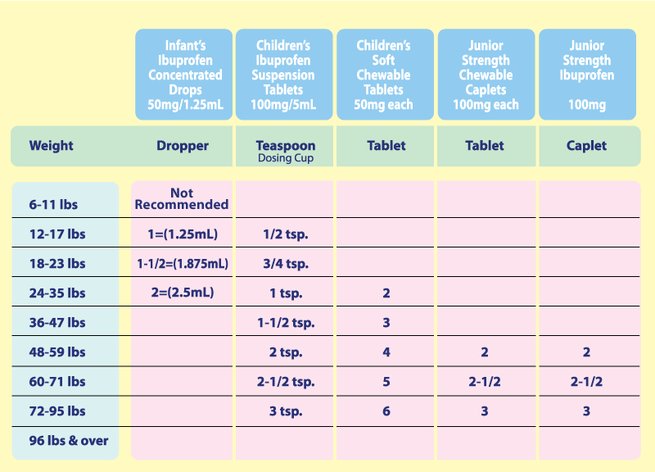To effectively manage pain and fever, knowing how to rotate Motrin and Tylenol is crucial. Alternating these two medications can provide better relief and reduce the risk of overmedication. By strategically timing and alternating doses, you can maximize their effectiveness while minimizing potential side effects. This simple yet powerful technique can be a game-changer in handling various ailments, offering a safe and efficient way to keep discomfort at bay. Mastering the art of rotating Motrin and Tylenol can significantly improve your approach to managing pain and fever.
How to Rotate Motrin and Tylenol: A Guide for Parents
Welcome to our comprehensive guide on how to rotate Motrin and Tylenol for your child’s pain relief. As a parent, it can be challenging to navigate the world of children’s medications, especially when it comes to managing pain and fever. In this article, we will walk you through the basics of using Motrin (ibuprofen) and Tylenol (acetaminophen) safely and effectively to provide your child with the best care possible.
The Importance of Rotating Motrin and Tylenol
Before we delve into the specifics of how to rotate Motrin and Tylenol, let’s understand why this practice is essential. Both Motrin and Tylenol are commonly used over-the-counter medications for pain and fever relief in children. They work in different ways and have different dosing intervals, making them safe to use together when rotated properly.
Rotating these medications can help provide continuous relief for your child and prevent the risk of overdosing on a single medication. It also helps in managing specific symptoms more effectively, as each medication targets different pathways in the body.
Understanding Motrin (Ibuprofen) and Tylenol (Acetaminophen)
Motrin (Ibuprofen): Ibuprofen is a nonsteroidal anti-inflammatory drug (NSAID) that helps reduce inflammation and relieve pain. It is commonly used for conditions such as fever, headache, muscle aches, and toothaches. Ibuprofen works by inhibiting the production of certain chemicals in the body that cause inflammation and pain.
Tylenol (Acetaminophen): Acetaminophen is a pain reliever and fever reducer that works by blocking the production of certain chemicals in the brain that cause pain and fever. It is commonly used for conditions such as fever, headache, and minor aches and pains. Unlike ibuprofen, acetaminophen does not have anti-inflammatory properties.
When to Use Motrin and Tylenol
Knowing when to use Motrin and Tylenol for your child’s pain or fever is crucial. Always consult with your child’s healthcare provider before starting any new medication regimen. Here are some general guidelines on when to use Motrin and Tylenol:
Fever:
For fever management, both Motrin and Tylenol can be effective. It is generally recommended to start with one medication and switch to the other if the fever persists after the recommended dosing interval. Always follow the dosing instructions provided on the medication packaging or by your healthcare provider.
Pain Relief:
For pain relief, the choice between Motrin and Tylenol may depend on the type and severity of pain your child is experiencing. Motrin is generally more effective for inflammatory pain, such as muscle strains or arthritis, while Tylenol may be sufficient for mild to moderate pain, such as headaches or toothaches.
How to Safely Rotate Motrin and Tylenol
Rotating Motrin and Tylenol correctly involves following specific dosing schedules to avoid overdose and ensure the best outcomes for your child. Here’s a step-by-step guide on how to safely rotate Motrin and Tylenol:
Step 1: Determine the Correct Dosages
Before administering any medication, make sure you know the correct dosage for your child’s age and weight. Refer to the dosing instructions on the medication packaging or consult with your healthcare provider if you are unsure.
Step 2: Establish a Dosing Schedule
Work with your healthcare provider to create a dosing schedule that alternates between Motrin and Tylenol at the appropriate intervals. This schedule will depend on your child’s age, weight, and the severity of their symptoms.
Step 3: Monitor for Side Effects
While rotating Motrin and Tylenol is generally safe, it is essential to monitor your child for any potential side effects, such as stomach upset or allergic reactions. If you notice any adverse effects, stop the medication and consult with your healthcare provider immediately.
Step 4: Stay Hydrated
Encourage your child to stay hydrated while taking Motrin and Tylenol to prevent dehydration, especially if they have a fever. Offer plenty of fluids such as water, clear juices, and broth to keep them hydrated and help the medications work effectively.
Best Practices for Rotating Motrin and Tylenol
As you navigate the process of rotating Motrin and Tylenol for your child, keep these best practices in mind:
1. Follow a Strict Dosing Schedule:
Stick to the dosing schedule provided by your healthcare provider and avoid doubling up on doses to prevent accidental overdose.
2. Keep Track of Doses:
Maintain a log of when you administer Motrin and Tylenol to ensure you are rotating them correctly and at the appropriate intervals.
3. Be Mindful of Interactions:
Check for any potential drug interactions with other medications your child may be taking to avoid adverse effects.
4. Consult with Healthcare Providers:
Always consult with your child’s healthcare provider if you have any concerns or questions about rotating Motrin and Tylenol.
Rotating Motrin and Tylenol can be a safe and effective way to manage your child’s pain and fever. By understanding the differences between these medications, establishing a dosing schedule, and monitoring for side effects, you can provide your child with the relief they need while minimizing the risk of overdosing. Remember to consult with healthcare professionals for personalized guidance on how to rotate Motrin and Tylenol for your child’s specific needs.
We hope this guide has been helpful in navigating the world of children’s pain relief medications. Stay informed, stay vigilant, and most importantly, stay proactive in caring for your child’s health and well-being.
Thank you for reading!
How To Use Tylenol And Motrin To Treat Your Child's Fever And Pain, By Dr. Tahir
Frequently Asked Questions
How should I rotate Motrin and Tylenol for my child’s fever?
To rotate Motrin and Tylenol for your child’s fever, you can give one medication and then, if needed, administer the other medication once the specified time interval has passed. For example, you can give Tylenol (acetaminophen) first and then switch to Motrin (ibuprofen) after the appropriate duration to ensure that your child receives effective fever relief.
What is the recommended time interval for rotating between Motrin and Tylenol?
The recommended time interval for rotating between Motrin (ibuprofen) and Tylenol (acetaminophen) is typically around 3-4 hours. However, it is crucial to follow the specific dosing instructions provided by your healthcare provider or the medication label to ensure safe and effective use of both medications.
Can I give Motrin and Tylenol together to my child?
No, it is not recommended to give Motrin (ibuprofen) and Tylenol (acetaminophen) together to a child unless advised by a healthcare professional. Giving both medications simultaneously can increase the risk of side effects and overdosing. It is safer to alternate between the two medications at appropriate intervals as directed.
What should I do if my child vomits after taking Motrin or Tylenol?
If your child vomits after taking Motrin or Tylenol, do not administer another dose immediately. Wait for a reasonable amount of time before giving another dose to prevent the risk of overdose. If vomiting persists or if you have concerns, consult a healthcare provider for further guidance on managing your child’s fever.
Are there any potential side effects of rotating between Motrin and Tylenol?
While rotating between Motrin (ibuprofen) and Tylenol (acetaminophen) is generally safe and effective for managing fever, it is essential to be aware of potential side effects. Common side effects may include upset stomach, allergic reactions, or liver problems. If you notice any unusual symptoms or reactions in your child, seek medical attention promptly.
Final Thoughts
In conclusion, alternating between Motrin and Tylenol can effectively manage pain and reduce fever. Remember to follow proper dosing instructions and never exceed the recommended dosage. Start by giving one medication, then switch to the other after the appropriate time interval. How to rotate Motrin and Tylenol is essential in maintaining their effectiveness and avoiding potential side effects. Always consult with a healthcare provider for personalized guidance. Balancing these two medications can provide effective relief when used correctly.











